The solution for easy VAT recovery
Mooncard simplifies recovering VAT on your business expenses. Recoverable VAT is calculated for every expense. At any time, you can view and export the expenses with supporting documents to facilitate your VAT return.
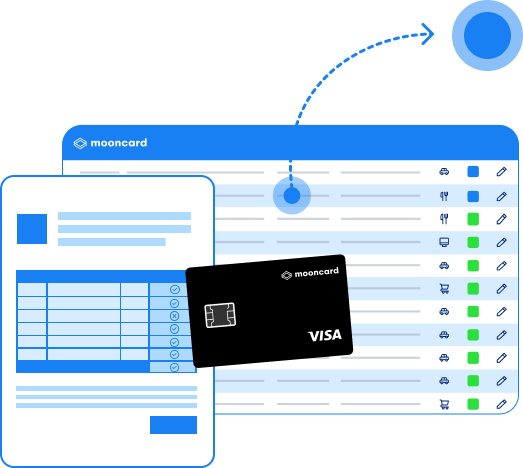
How does it work?
Pay, take a photo of the receipt, and your expenses are sent to the accounts. The recoverable VAT is automatically calculated.
.png)
-
Pay with your Mooncard for your expenses
Use your Mooncard corporate card for your expenses (fuel, parking, toll, food, hotel, etc).
-
Take a photo of your receipt
You will receive an SMS reminding you to take a photo of your receipt. You can then throw it away because it is digitally archived.
-
The expense report is automatically generated with the recoverable VAT calculated
The expense report is pre-filled thanks to our algorithms capable of identifying the nature, the amount, the VAT, etc. from the bank transaction.
-
The expense report is submitted for approval
Depending on the approval process defined by the company, the expense is then checked and validated by your manager or accountant.
All about VAT
How it is defined, claiming it back, declaring it and much more
We’ve all heard of value-added tax, better known as VAT. It’s something we come across in our everyday lives as consumers and we are used to it being included in the price of the goods and services we buy. But how many of us could actually explain how it works? What rate applies to the sales of different goods and services? How and how often should it be declared? More importantly, how can businesses reclaim the VAT they have paid? Here, we’ll take an in-depth look at VAT and what it means for your business.
%20(1).jpg)
Table of contents
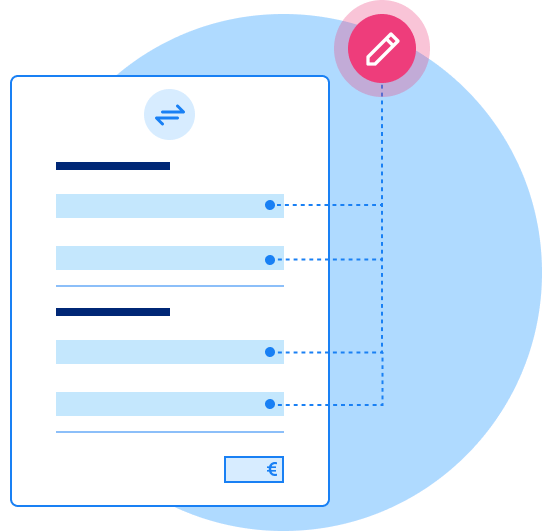
How can VAT be reclaimed?
VAT is charged on most goods and services in the UK. If you are a VAT-registered business in the UK, you can claim back the VAT you pay on eligible business expenses. This is a complex issue, but one which is important to understand, as it can have a significant impact on the cost of various goods and services.
There are two main situations in which you can claim back VAT. The first is when you have paid VAT on an eligible business expense. This may be either goods or services. The second situation is when a customer has left you with a bad debt.
Read more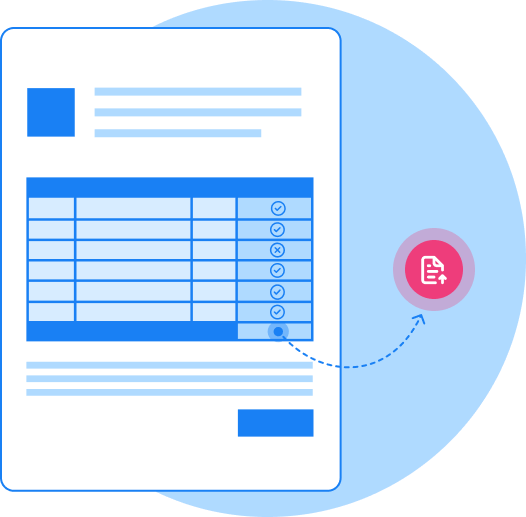
What are the various VAT rates?
In the UK, there are three rates of VAT. Rates in other countries may vary, particularly since Brexit. These are as follows:
Standard rate VAT (20%). This applies to the sales of most goods and services in the country unless they fall within one of the other two VAT rate categories.
Reduced rate VAT (5%). This applies to a restricted list of goods and services, including things such as children’s car seats, mobility aids for the elderly, stop smoking cessation products and services, and electric storage heaters. A full list to help you identify the categories of goods and services to which the 5% rate applies can be found on the HMRC website.
Zero-rate VAT (0%). The zero-rate VAT is different from being exempt from VAT. Again, the full list of goods and services to which a 0% VAT rate applies can be found on the HMRC website, but these include advertising services for charities, equipment for disabled people, dispensing of prescriptions by registered pharmacists and so on.
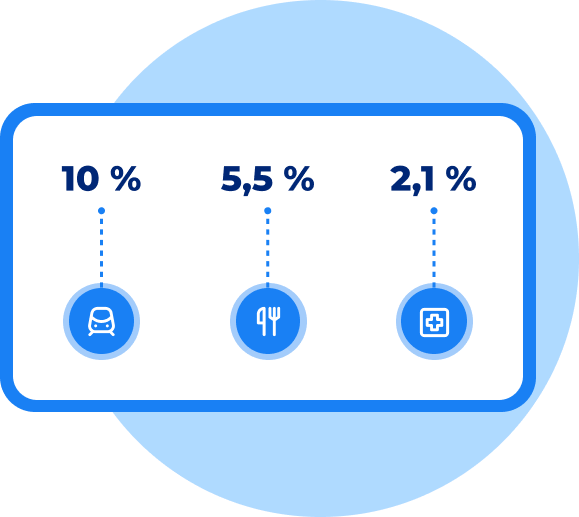
What is a VAT return?
If you are registered for VAT in the UK, you need to make regular VAT returns online. Once you have submitted your VAT return, you need to pay the corresponding amount of VAT. Remember, that you will be able to reclaim the VAT you have paid on goods and services and that these two amounts may cancel each other out.
From April 2022, all VAT returns need to be made using a piece of software which is compatible with the HMRC Making Tax Digital scheme. It is no longer possible to submit manual VAT returns. Why not use this obligation as an opportunity to overhaul the way to track, manage and declare your business expenses in general?
Read more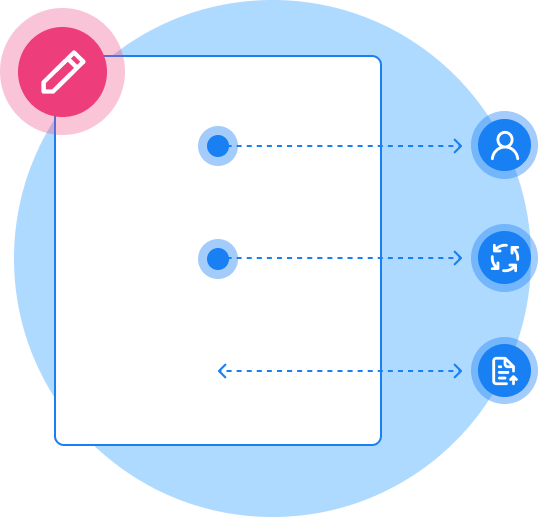
VAT schemes
There are different ways in which businesses can calculate and report their VAT payments, depending on the type of business and their annual turnover. There are five main types of VAT schemes, namely the VAT Flat Rate scheme, the VAT Cash Accounting scheme, the VAT Annual Accounting scheme, the VAT Margin scheme and the VAT Retail scheme.
Choosing the right VAT scheme for you can be complicated, as certain schemes only apply up to a certain business turnover threshold, while others apply to specific sectors of activity. Specific schemes apply, for example, to the sale of second-hand goods or to retail.
FAQ
What is the role of VAT?
In the UK, businesses that sell goods or services that are subject to VAT claim the tax from their customers. They then have to pay the VAT they collect to the HMRC. By deducting VAT that companies pay, products are not taxed several times when they are sold and resold.
From the amounts they have to pay to the HMRC, companies can deduct the VAT they have paid on purchases they have made within the country. They therefore only pay net VAT, i.e. the difference between the VAT they have collected from customers and the VAT they have paid on business expenses. Only the end consumer effectively pays value added tax.
What does VAT mean for a company?
Businesses in the UK with an annual turnover of £85,000 or more are obliged to register for VAT. There are fines in place for companies which do not register. Businesses turning over less than that limit can decide whether or not it is in their interests to register for VAT. For example, a business which has to buy a lot of raw materials and pay VAT on them might prefer to register for VAT and be able to claim that VAT back. Other businesses are not eligible to register for VAT, particularly companies that sell goods or services which are VAT-exempt.
When should VAT be charged?
In the UK, VAT is administered and collected by the HMRC. As mentioned above, a business is obliged to register for VAT when its annual turnover exceeds £85,000. VAT is only charged when a VAT-registered company sells VAT-taxable goods or services to consumers (which can be individuals or other businesses).
To make life easier for consumers, VAT is presented as already included in the purchase price. For example, if a table has a price tag of £150, the actual price of the table is £125 and the VAT amounts to £25. The situation may be different for goods being sold direct to other businesses, and prices may be presented as “exclusive of VAT”, as the business is able to reclaim the VAT.
How much is VAT?
Prior to Brexit, the UK formed part of the EU VAT area and the EU-governed VAT rates apply to all countries within that area. Since 1 January 2021, the UK Government no longer has to comply with EU rules on minimum VAT rates and reduced VAT rates.
There are three different VAT rates in the UK, each of which applies to different types of goods and services. The Standard Rate of VAT in the UK is currently 20%, which applies to most goods and services. There is also a Reduced Rate of VAT which stands at 5% and applies to a specific range of goods and services. Finally, there is a Zero Rate of VAT which applies to another list of goods and services, all of which can be found on the HMRC website.
How to register for VAT?
Registering for VAT is relatively straightforward and can be done online. Businesses can register for an online VAT account (sometimes referred to as a Government Gateway account) through the HMRC website.
Some businesses prefer to have the help of an accountant who can submit their VAT returns on their behalf, but this is by no means a legal requirement.
Once you have registered, you will be issued with a 9-digit VAT number (known as a VRN, VAT registration number), which must be included on all invoices. You can start charging and reclaiming VAT from the “effective date of registration” for VAT.
How to check if a company is VAT-registered ?
Prior to the UK’s departure from the European VAT area, consumers and businesses could use the European VAT Information Exchange System (VIES) to check the validity of a company’s VAT number. Since 1 January 2021, however, all queries regarding VAT registration now have to go to the UK authorities. The UK Government website contains an online VAT registration checker which can be used to check if a VAT number is valid. Users can enter a VAT number, and find out whether it is valid, as well as see the name and address of the person to which the VAT number is registered.


Need more information?
Our team is available Monday to Friday from 9 a.m. to 7 p.m. to present the Mooncard solution to you and work with you to design a tailor-made quote corresponding to your business needs.
